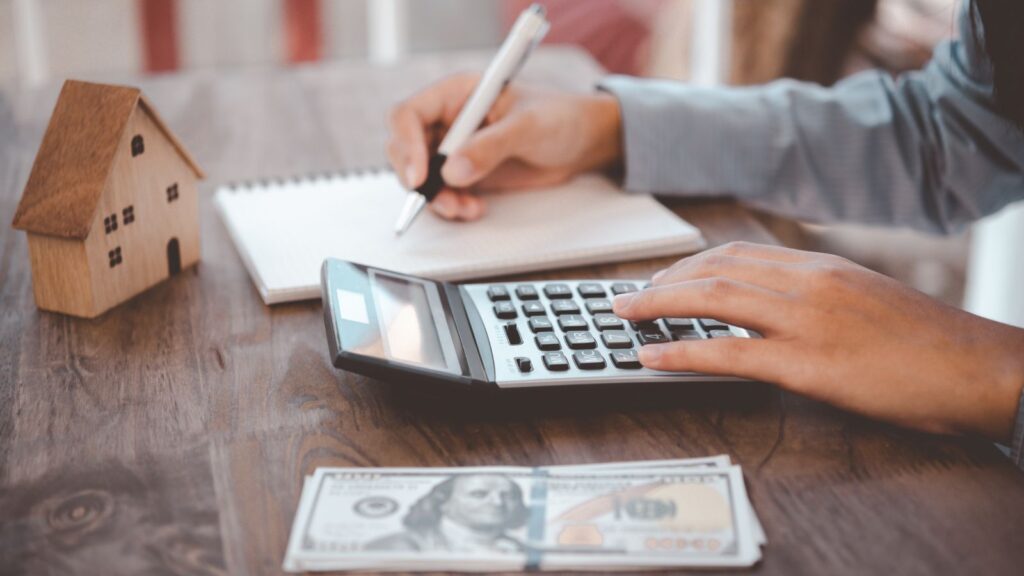Determining how much house you can afford is one of the most significant steps in the home-buying process. Striking a balance between your dream home and financial comfort ensures you’ll love your new home without stressing over your payments. Understanding the factors influencing affordability will empower you to make informed decisions and start your journey toward homeownership with confidence.

Understanding Your Income and Expenses
Your income is the foundation of your home-buying budget, but it’s only part of the equation. To start, calculate your gross monthly income from all reliable sources. This figure represents your total earnings before taxes and deductions. Next, take a close look at your monthly expenses. Fixed costs like rent, utilities, and loan payments are essential to include, as are variable expenses such as groceries, transportation, and entertainment. This comprehensive overview will show how much you’re spending each month and what’s left for a mortgage payment.
Mortgage lenders rely heavily on a metric called the debt-to-income ratio (DTI) to evaluate your financial stability. Your DTI compares your total monthly debt obligations to your gross income. A DTI under 36% is ideal, though some lenders allow higher ratios based on credit scores and other factors. For instance, if your monthly income is $6,000 and your debts total $2,000, your DTI is 33%. Understanding this ratio will help you determine a monthly payment you can comfortably afford while still leaving room for savings and discretionary spending.
Lastly, it’s wise to account for unexpected expenses. Emergencies or fluctuations in income can arise, so building a financial cushion ensures your mortgage remains manageable. Being realistic about your income, expenses, and DTI ratio provides a solid foundation for determining your home-buying budget without risking financial strain.
Factoring In Down Payments and Closing Costs
Your down payment is one of the most influential factors in determining your overall home-buying affordability. A larger down payment typically results in lower monthly payments and may allow you to avoid private mortgage insurance (PMI), which is required for most loans with less than a 20% down payment. While 20% of the home’s price is a common recommendation, many loans offer more flexible requirements. For example, FHA loans allow as little as 3.5% down, and VA loans often require no down payment at all.
However, it’s not just the down payment that needs attention. Closing costs are an essential part of the equation and can catch buyers off guard if they’re not prepared. These costs typically range from 2% to 5% of the home’s purchase price and include fees for appraisals, inspections, title insurance, and loan origination. For instance, on a $300,000 home, closing costs could range from $6,000 to $15,000, depending on the lender and location.
Budgeting for these upfront costs is critical to avoiding financial strain. It’s also worth noting that some sellers are open to covering a portion of closing costs during negotiations, which could save you money. Additionally, certain loan programs offer assistance for down payments and closing costs, particularly for first-time buyers.
Understanding these costs in detail ensures you’re fully prepared when it comes time to finalize your purchase. By planning ahead, you’ll avoid surprises and remain financially confident as you move closer to owning your home.
Considering Your Loan Options
The type of loan you choose has a direct impact on how much house you can afford. Conventional loans, often favored by buyers with higher credit scores, usually offer lower interest rates and fewer restrictions on property types. FHA loans, on the other hand, are geared toward buyers with lower credit scores or smaller down payments, making them a popular choice for first-time buyers. VA loans provide significant benefits, including no down payment and no PMI, but are only available to eligible veterans and service members.
Interest rates also play a crucial role in affordability. Even a slight difference in rates can significantly affect your monthly mortgage payment. For example, on a $300,000 loan, an interest rate increase from 5% to 5.5% could raise your monthly payment by over $80. Staying informed about current rates and locking in a favorable rate through pre-approval can help you maximize your budget.
Loan terms are another factor to consider. A 30-year fixed-rate mortgage offers predictable payments over a longer period, making it a popular choice for affordability. A 15-year loan, while offering lower interest rates, results in higher monthly payments. Adjustable-rate mortgages (ARMs) may start with lower rates but can increase over time, which could impact long-term affordability.
Choosing the right loan involves weighing your financial goals, current situation, and future plans. Working with a knowledgeable lender to explore your options ensures you’ll select a loan that aligns with your budget and sets you up for successful homeownership.
Accounting for Additional Homeownership Costs
Owning a home comes with ongoing expenses beyond your monthly mortgage payment. These additional costs should factor into your budget to provide a realistic picture of affordability. Property taxes are one of the most significant expenses and vary widely depending on location. Local tax rates are typically expressed as a percentage of the home’s assessed value, so researching rates in your desired area is essential.
Homeowners insurance is another necessary expense. The cost depends on factors like the property’s value, location, and coverage level. For instance, homes in areas prone to natural disasters may require higher premiums or additional coverage for flood or earthquake insurance.
Many properties are also subject to homeowners association (HOA) fees. These fees cover maintenance and amenities for the community, such as landscaping, pools, or security. Monthly HOA fees can range from under $100 to several hundred dollars, depending on the community.
Maintenance and utilities are additional considerations. Older homes or larger properties may require higher maintenance budgets, while energy-efficient homes can lower utility costs. Budgeting for these variables ensures you’re prepared for the full scope of homeownership.
By factoring in these ongoing costs, you’ll have a comprehensive understanding of what homeownership entails financially. This proactive approach ensures you can maintain your home comfortably without unexpected financial stress.
Staying Realistic About Wants and Needs
The home-buying process often involves balancing your ideal wish list with your budget. To make informed decisions, it’s crucial to distinguish between your must-haves and nice-to-haves. Must-haves include essential features like the number of bedrooms, proximity to work or schools, and safety of the neighborhood. Nice-to-haves might include luxury finishes, a large backyard, or an open-concept layout.
Prioritizing your needs ensures that your home meets your lifestyle requirements without overspending. For example, a smaller home in a prime location may be more practical than a larger home in an inconvenient area. Creating a ranked list of features can help streamline your search and prevent you from getting sidetracked by homes that exceed your budget.
While it’s important to be flexible, it’s equally vital to stay grounded in your financial reality. Falling in love with a home outside your price range can lead to buyer’s remorse if the monthly costs become unmanageable. By focusing on affordability, you’ll enjoy peace of mind knowing that your new home is both a comfortable and a wise investment.
Reevaluating as You Progress
Financial circumstances and market conditions can change throughout the home-buying journey, making it important to reassess your budget periodically. For example, interest rates may rise or fall, altering your purchasing power. Similarly, unexpected expenses or changes in your income could influence your affordability.
Regularly checking in on your financial situation ensures that you stay on track and avoid overextending yourself. Tools like mortgage calculators and budget trackers can help you adjust your expectations as needed. If you’ve been pre-approved for a loan, it’s also a good idea to keep your lender updated on any changes that might impact your application.
Being adaptable throughout the process allows you to remain confident and focused on finding the right home. With careful planning and ongoing evaluation, you’ll be well-positioned to secure a property that fits both your lifestyle and your financial goals.
Ready to take the next step toward finding a home that fits your budget? Reach out today to explore your options and make your homeownership goals a reality.

